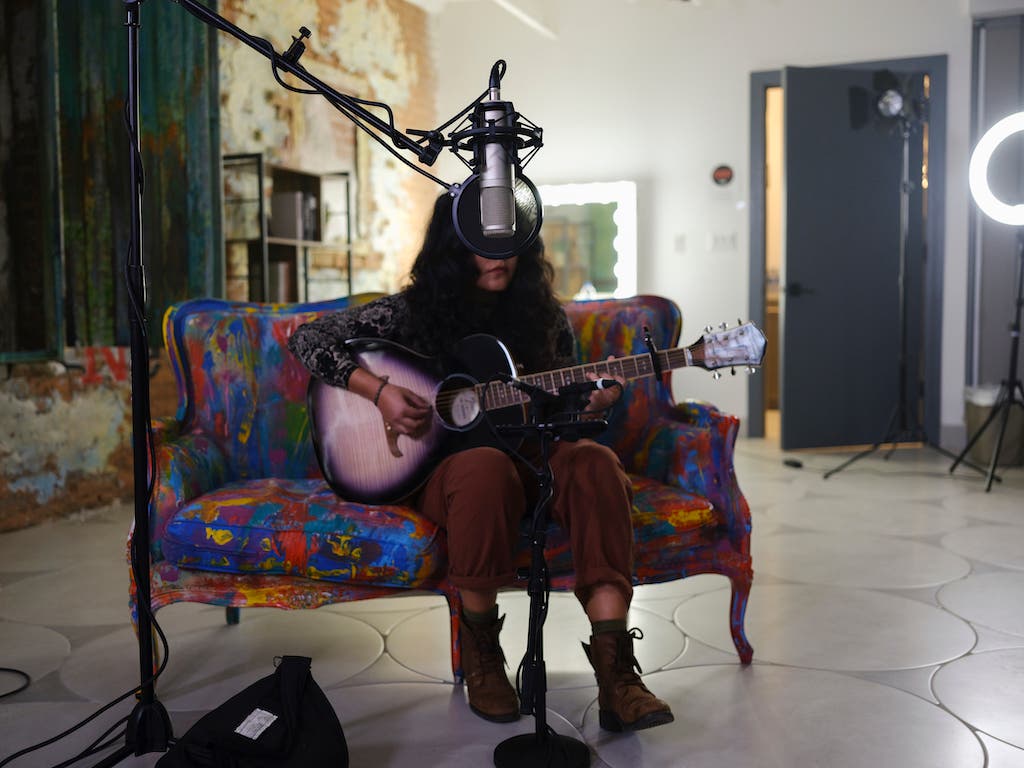When it comes to the purposes and roles of a microphone, few go through as much scrutiny as large diaphragm vocal condenser microphones. Another subset of those—vacuum tube condenser microphones—earns their spot in every studio engineer’s collection of the most coveted tools. Known for their classic sound hailing from the ‘50s and ‘60s, microphones such as the Neumann U47 and the AKG C12 immediately come to mind. So, where does the Rode K2 Microphone fit into this field? Released in 2004, what is its relevancy to its competitors long established before its time?

The Rode K2 Microphone’s Design
Let’s start with what the K2 brings to the table. It has a large, 1” gold-sputtered diaphragm, class-A 6922 vacuum tube, and a variable pickup pattern. The high-quality class-A circuitry is internally shock-mounted, and results in the extremely low noise floor of only 10dBA – translating to a signal-to-noise ratio of 81dB. The microphone construction is rock-solid, including a steel mesh grille, all-metal housing, and locking ring for mounting.
The variable pattern control feature is an exciting concept, giving you the ability to put the microphone in patterns ranging from figure 8 to cardioid to omnidirectional. It also gives you fine control of the shape of the polar pattern as it transitions between these three.
The Sound
That’s all fine and well, but what does it sound like? To no surprise, the vacuum tube impacts the classic warmth one would expect from this variety of microphones. It bears an astonishingly flat frequency response, with a touch of 12kHz presence peak when operated omnidirectionally and an even subtler 5kHz lift in a cardioid pattern.
The power of the variable pickup pattern certainly lies in the microphone’s ability to adhere to different applications and vocal types. Its characteristics blend somewhat kaleidoscopically when operating between different patterns. I found it too wide when used at a distance greater than 8” in overly live settings. However, even in a cardioid pattern, its proximity effect is understated, giving smooth results at close proximities where it seems to operate best. A smooth top-end, extremely detailed middle, and surprisingly robust low-end are all characteristics of the 6922 vacuum tube.
The Packaging
The power supply, multi-pin cable, and suitable shock mount are packaged with the microphone in a solid flight case. Weighing 1.8 pounds, you should be prepared with a suitable microphone stand for mounting. You won’t want any harm to such a precious piece of gear! One notable omission is the lack of a filter. You’ll want to engage a roll-off on your mic pre. Pairing this with a pop filter is a good idea, especially when using it in close proximity applications. K2 handles transients as powerful as 162dB SPL. This means you’ll certainly have the headroom at the microphone to handle a little extra excursion.

Given all the above, this microphone sits very well amongst its age-old competitors. Different tubes will impart different qualities. One microphone may match a vocalist or song better than another for any number of reasons. But, the K2 holds its own against the U47 and C12. It also does so at a price point that makes a professional tube microphone accessible to both small and large studios. Furthermore, longevity is of no concern. In addition to the 10-year manufacturer warranty, tubes can be replaced without any soldering. The K2 boasts more warmth than its solid-state counterparts, such as a U87 or TLM103. This makes it a preferable choice in applications where one wishes to smooth round off the top-end of the sonic spectrum to create a sound that’s less harsh.
All in all
The Australian company has created a modern classic in the Rode K2 – a highly versatile, naturally musical microphone with an ear for the past and an eye for the future. I imagine this as a natural go-to for musicians seeking warmth in their home recording sounds, just as much as for audiophiles and tonmeisters in search of another sonic color to add to their palette.






